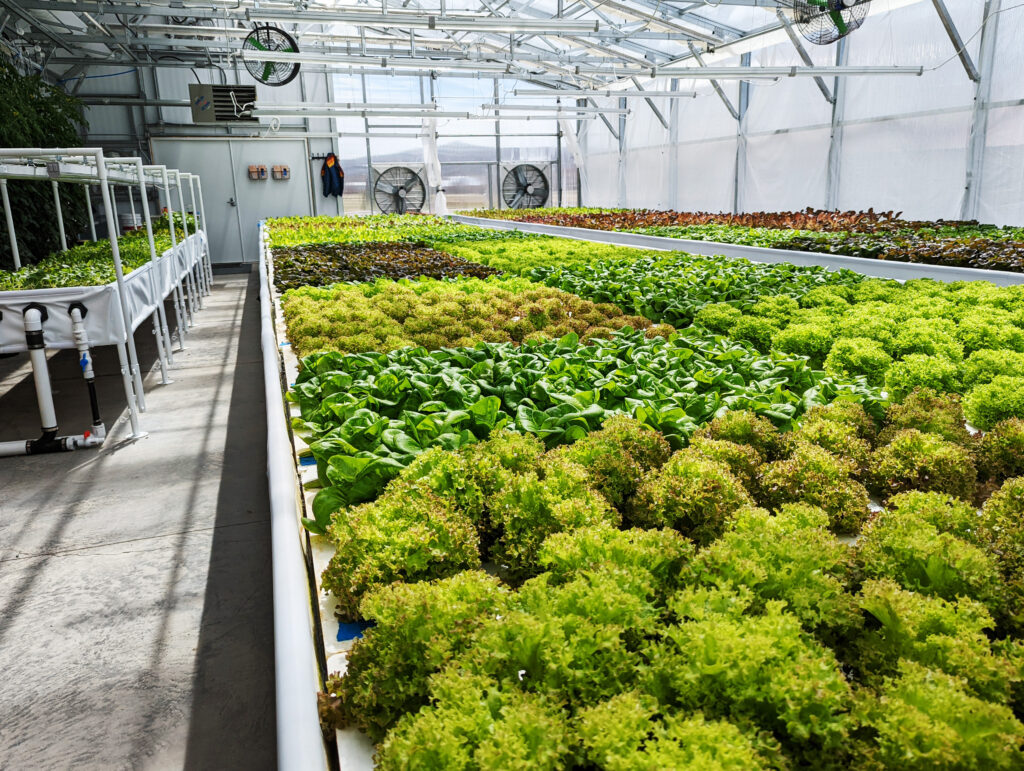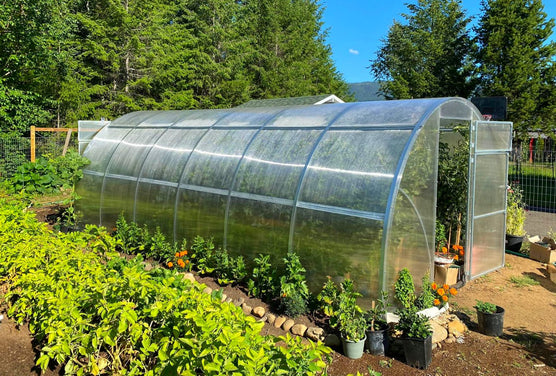Monarch Greenhouse Utah: Elevating Expanding Rooms with Accuracy Construction
Wiki Article
The Future of Greenhouses: Advancements in Sustainable Farming
Are you interested regarding the future of greenhouses and exactly how they are changing lasting agriculture? Look no more! In this short article, we will explore the interesting technologies that are leading the method for a greener and much more effective farming industry. From sophisticated environment control systems to upright farming strategies, water-efficient watering approaches, renewable energy combination, and smart data analytics, these advancements are transforming the method we grow our food. Prepare yourself to uncover the future of lasting farming in greenhouses!Advanced Climate Control Equipment
To achieve optimal expanding conditions, you can rely upon the developments in greenhouses with advanced environment control systems. These systems have actually transformed the method we grow plants, offering a controlled environment that contributes to plant growth. With these ingenious systems, you can currently adjust temperature, humidity, light levels, and even carbon dioxide concentrations to develop the perfect problems for your plants to thrive.One of the vital attributes of these innovative environment control systems is their capacity to control temperature. By utilizing sensing units and automated controls, the greenhouse can change the temperature level based upon the certain requirements of the plants. This ensures that they are never subjected to extreme warmth or cool, which can be damaging to their development.
Humidity control is another vital aspect of these systems. By maintaining the perfect humidity levels, you can prevent problems such as mold, mildew, and disease from influencing your crops. These systems can also manage the quantity of light that reaches the plants, ensuring that they receive the ideal amount for photosynthesis.
Furthermore, progressed environment control systems can even manipulate CO2 concentrations. By boosting the degrees of CO2 in the greenhouse, you can boost plant growth and performance. This is specifically advantageous in locations with reduced natural carbon dioxide levels.
Upright Farming Techniques
One important vertical farming technique is utilizing piled growing systems. Piled expanding systems are generally utilized in urban locations where room is limited.One popular approach is referred to as upright hydroponics, where plants are expanded in nutrient-rich water without soil. This method is very efficient as it minimizes water usage by approximately 90% contrasted to typical farming approaches. Additionally, considering that the plants are expanded inside your home, they are protected from pests and conditions, reducing the need for chemicals.
An additional method is aeroponics, which entails putting on hold the plant origins in a mist or air atmosphere. This method enables optimum nutrient absorption and oxygenation, causing faster growth and higher returns. Aeroponics likewise utilizes less water than standard farming and can be executed in vertical systems, making it a popular selection for vertical farming.
Water-efficient Irrigation Methods
When it comes to applying water-efficient irrigation techniques in lasting farming,Maximizing water conservation is essential. With international water deficiency ending up being a pressing concern, it is vital to create cutting-edge strategies that maximize water usage in greenhouse operations.One appealing method is drip watering, which delivers water directly to the plant origins, decreasing waste and evaporation. By making use of a network of tubes with small emitters, water is applied gradually and specifically, ensuring that plants receive the needed dampness without excess drainage.
One more effective method is making use of soil moisture sensors. These devices measure the wetness web content in the dirt and offer real-time information to farmers. By keeping track of the soil's moisture degrees, farmers can properly determine when and how much water to use, avoiding over-irrigation.
click here for info
Moreover, the execution of rainwater harvesting systems is obtaining popularity in greenhouse agriculture. Collecting rain from rooftops and saving it in storage tanks allows farmers to use this natural source for irrigation purposes, lowering dependence on standard water resources.
Lastly, the adoption of automated irrigation systems can considerably improve water effectiveness. These systems make use of sensors to spot dirt moisture levels and climate condition, readjusting irrigation schedules accordingly. By optimizing water use based on real plant demands, these systems can lower water waste and promote lasting farming methods.
Renewable Power Assimilation
Currently, allow's explore just how you find can incorporate renewable resource into your greenhouse procedures for an extra sustainable future. Renewable resource combination in greenhouses provides a number of advantages, including minimized operating prices and decreased reliance on non-renewable energy resources. One means to integrate eco-friendly energy is through the installment of photovoltaic panels. These panels are put on the roofing or bordering areas of the greenhouse to catch sunshine and transform it right into electrical power. The created power can after that be used to run various operations within the greenhouse, such as heating, illumination, and air flow systems. Furthermore, excess energy can be kept in batteries for usage throughout non-sunlight hours. An additional approach of renewable resource assimilation is making use of wind turbines. These turbines harness wind power and convert it into electricity, which can be used to supplement the power requirements of the greenhouse. Incorporating renewable resource sources not just reduces greenhouse gas exhausts yet also promotes sustainability and durability in your farming operations. By accepting sustainable power, you can contribute to a greener future while guaranteeing the long-term stability of your greenhouse organization.Smart Data Analytics and Automation
To enhance the efficiency of your greenhouse procedures and optimize resource use, take into consideration carrying out smart data analytics and automation. Smart information analytics entails accumulating and analyzing data from numerous sensors and devices within your greenhouse. By checking variables such as temperature level, humidity, light levels, and dirt dampness, you can get important insights into the health and growth of your plants. This information can aid you make notified decisions about adjusting environmental conditions, maximizing watering schedules, and avoiding possible issues prior to they emerge.
This can include automating the control of lights, ventilation, irrigation systems, and nutrient delivery. By automating these procedures, you can make sure that your plants receive the ideal conditions and nutrients at the ideal time, without the requirement for constant manual treatment.
Moreover, smart data analytics and automation can interact synergistically. The information gathered Visit This Link by sensing units can be utilized to inform automated systems, enabling them to make real-time modifications based on the existing conditions. This combination of information analytics and automation can cause a lot more effective and specific resource allowance, ultimately leading to higher returns and much better plant quality.
Conclusion
To conclude, the future of greenhouses in sustainable farming looks promising. With innovative climate control systems, vertical farming strategies, water-efficient irrigation approaches, and sustainable energy assimilation, greenhouses are ending up being much more efficient and eco pleasant. Additionally, the usage of smart information analytics and automation additionally enhances performance and decreases waste. These innovations are leading the way for an extra effective and sustainable farming industry, ensuring a greener and much healthier future for all.
By enhancing water use based on real plant needs, these systems can decrease water waste and promote lasting farming methods.

Report this wiki page